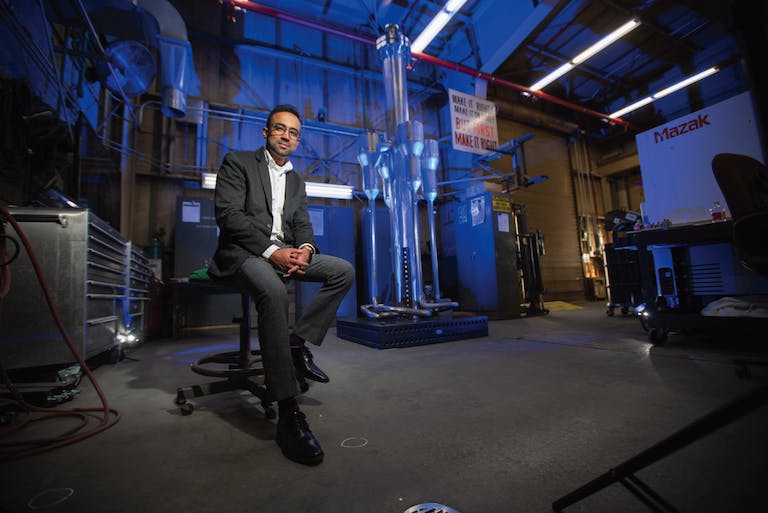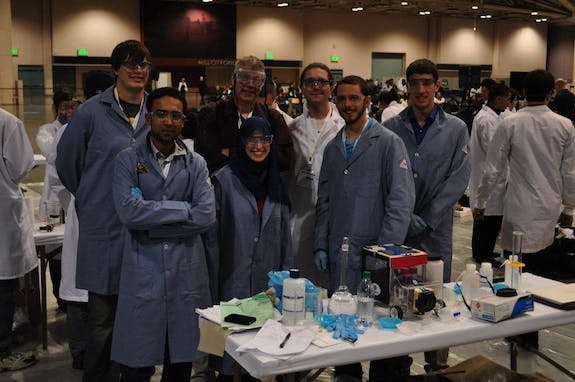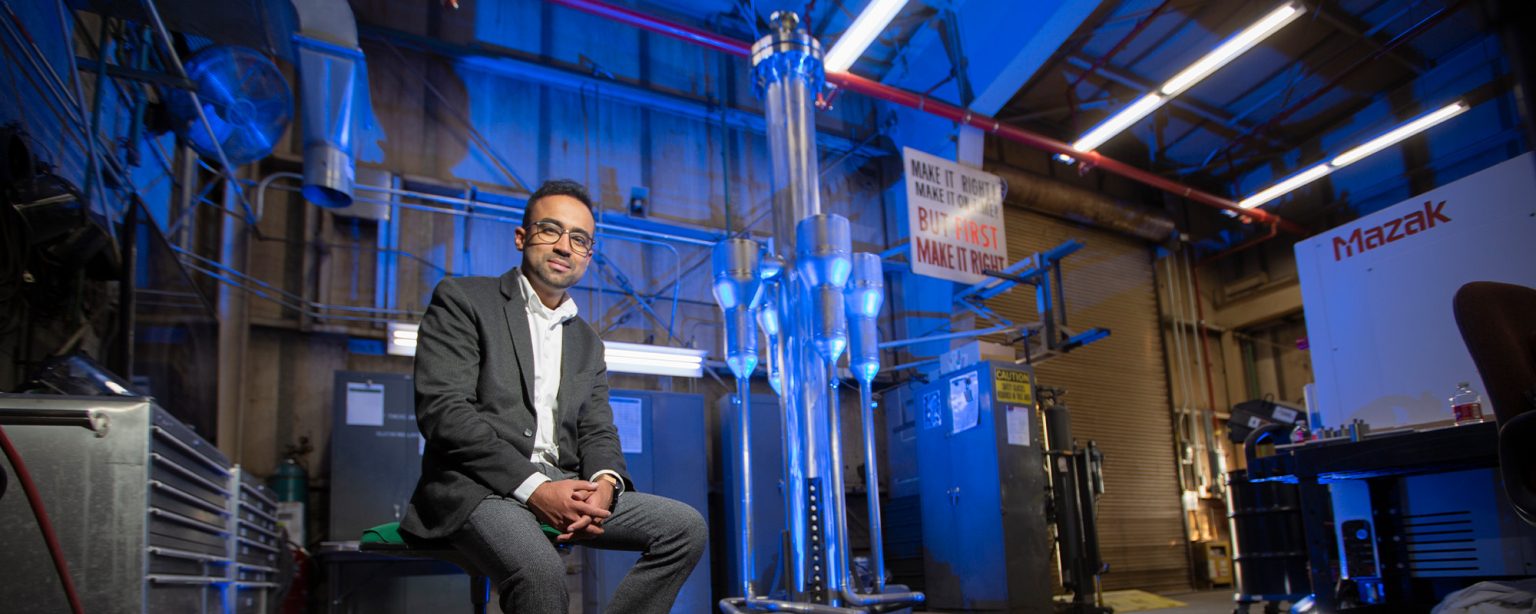Yasir Arafat is a MARVEL superhero.
No, he’s not a Marvel Comics superhero. Rather, he’s a nuclear engineer leading development of the U.S. Department of Energy’s Microreactor Applications Research Validation and Evaluation (MARVEL) project at Idaho National Laboratory.
And from concept to construction, MARVEL is coming together at lightning speed.

MARVEL will be built and demonstrated at INL’s Transient Reactor Test Facility and connected to the world’s first nuclear microgrid within two years. And it will help researchers test other microreactor-related technologies.
Arafat envisioned the initial concept of MARVEL in a frenzy of creative energy shortly after arriving at INL in 2019 to establish the microreactor program for the U.S Department of Energy (DOE).
“I remember it was two days before Christmas when I woke up, and it was like being struck in the head by lightning. I went to Walmart, grabbed a big paper and colored pencils, and sketched it out,” Arafat said.
Arafat convinced INL leadership and DOE’s Office of Nuclear Energy (DOE-NE) to fund the project, with support from the DOE Microreactor Program and the National Reactor Innovation Center.
Over an 18-month period beginning in June 2020, preliminary designs were completed, high fidelity modeling and simulations were run, prototypes were constructed, and the project underwent rigorous and deliberate iterations to mature the design. “All of this was done at a speed that people didn’t even think was possible in nuclear, let alone advanced nuclear,” Arafat said.

Born in exile
Growing up as a refugee in Bangladesh, Arafat attended schools that taught in English, where he excelled in science, technology, engineering and mathematics classes. At the age of 17, he leveraged that skillset to move with his brother to the country’s capital, Dhaka, to attend high school, where Arafat supported them financially by tutoring middle school students after class.
Coming to America

After high school, Arafat and his brother flew across the globe to find their way to La Roche University, a private Catholic school in Pittsburgh, Pennsylvania. He later transferred to the University of Pittsburgh where he graduated with a chemical engineering degree in 2011.
“I was fascinated with energy, and I wanted to make a difference in the energy sector. That was my passion,” Arafat said. He chose carbon-free nuclear energy because of his concerns about climate change.
“I know Bangladesh is one of the countries most affected by climate change,” he said. “Every year you see land being washed away by the rising sea level. Literally, the country’s footprint is shrinking with time. We debate about climate change in the U.S., but in Bangladesh, it was an undeniable reality because people live through it every day.”
He secured an engineering internship at Westinghouse, where he was eventually hired as a full-time research engineer after graduation. Realizing a market gap in decentralized power generation, he started articulating the design of one of the first microreactors in the nation.
“In 2014, my colleague and I started brainstorming on the back of napkins for about eight months during lunch breaks,” he said. “We formulated the eVinci microreactor project. This was before people knew what microreactors were.”
Leading at INL
When the eVinci project transitioned from the research and development stage to a commercial product line, Arafat caught the attention of INL leadership.
“I was not planning to come to INL. I was having a lot of fun developing a new nuclear system,” he said. But he was nonetheless intrigued at the opportunity to work at one of the nation’s foremost nuclear energy laboratories. “I felt I could have a much broader impact on microreactor deployment working from such a national laboratory, than a single commercial company.”

Within six months at INL, Arafat was leading the development of one of the first advanced nuclear reactors in over five decades. “This will pave the way for microreactors to provide reliable, long-term energy on Earth and extraterrestrially, to the surface of the Moon and Mars,” Arafat said.
John Jackson, national technical director for the DOE-NE Microreactor Program, said if anyone can make it happen, Arafat can.
“Yasir is undeterred in his quest to bring this remarkable game changer to reality,” said Jackson. “He has exactly the right mix of technical acumen and drive to make it a success.”
MARVEL will provide the industry with the ability to understand how microreactors can be built and integrate with other clean-energy generation on a net-zero microgrid. That would power electric vehicles, and when electricity is not needed, it would be stored in batteries or used to produce clean hydrogen.
“The dynamics of an on-site nuclear and renewable net-zero microgrid have been studied on paper, but they have not been validated by demonstration in an integrated way. It’s never been done before,” he added. “This would be the first nuclear microgrid in the world.”





